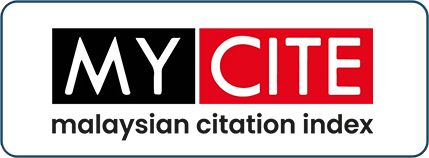Keperluan Garis Panduan Dan Etika Islam Dalam Penyelidikan Kecerdasan Buatan
DOI:
https://doi.org/10.33102/jfatwa.vol26no2.414Keywords:
garis panduan, etika Islam, penyelidikan, kecerdasan buatan, AIAbstract
Perkembangan teknologi dalam kecerdasan buatan atau AI semakin meningkat secara drastik. Daripada penggunaan telefon pintar, kereta tanpa pemandu, robot, hinggalah pembuatan senjata tanpa kawalan telah mengubah lanskap kehidupan manusia. Kajian ini bertujuan untuk mengenalpasti potensi dan impak penggunaan AI terhadap manusia pada masa kini. Kajian ini dijalankan secara kualitatif melalui tinjauan literatur dan analisis dokumen. Hasil kajian mendapati bahawa AI telah pun digunakan secara meluas terutamanya di negara membangun meliputi pelbagai bidang termasuklah kesihatan, ekonomi dan kewangan, penerbangan, automotif dan pendidikan. Walau bagaimanapun, penggunaan AI turut dieksploitasi dalam penglibatan aktiviti terorisme, pemalsuan identiti dan penyalahgunaan data. Lebih-lebih lagi, para pakar AI mula khuatir bahawa teknologi AI diluar kawalan dan memberi ancaman kepada manusia. Fenomena ini mencetuskan kebimbangan pelbagai pihak diluar negara termasuklah PBB, Suruhanjaya Eropah dan United Nation untuk mula menyediakan polisi, kawalan dan regulasi terhadap penyelidikan AI. Memandangkan pelbagai pihak diperingkat global sedang berusaha dalam menyediakan garis panduan dan etika dalam penyelidikan AI, terdapat peluang untuk bekerjasama dalam menawarkan input etika dari perspektif ajaran Islam. Keperluan kerjasama untuk membangunkan garis panduan dan etika dalam penyelidikan AI perlu mengambil kira pelbagai disiplin dan perspektif, termasuklah dari perspektif agama Islam. Kerjasama ini juga diharapkan dapat menangani pelbagai isu kontemporari demi melindungi hak dan kepentingan manusia, terutama komuniti muslim global.
Downloads
References
Ahmad, W., Rabee, K., & Zulkifle, M. (2017). Arab and Muslim contributions to Medicine and Research: A Review. Bangladesh Journal of Medical Science, 16(3), 339-345. https://doi.org/10.3329/bjms.v16i3.32844
Al Shouk, Ali. (2018). Dubai police to deploy robotic patrols. Australasian Policing, 10(1): 56.
Abdullah, Shahino Mah. (2018). Ethical code needed for A https://www.nst.com.my/opinion/columnists/2018/11/435928/ethical-code-needed-ai
Al-Hassani. (2017). 1001 inventions : Muslim heritage in our world. Manchester: Foundation of Science, Technology and Civilization
Amrizal, Victor & Aini, Qurrotul. 2013. Artificial Intellegence. Jakarta Barat: Halaman Moeka Publishing.
Au-Yong-Oliveira M., Canastro D., Oliveira J., Tomás J., Amorim S., Moreira F. (2019) The Role of AI and Automation on the Future of Jobs and the Opportunity to Change Society. In: Rocha Á., Adeli H., Reis L., Costanzo S. (eds) New Knowledge in Information Systems and Technologies. WorldCIST'19 2019. Advances in Intelligent Systems and Computing, vol 932. Springer, Cham
Bailey, L. W. (2019). New Technology for the Classroom: Mobile Devices, Artificial Intelligence, Tutoring Systems, and Robotics. In. Bailey, L. W., Educational Technology and the New World of Persistent Learning. pp.11.
Bostrom, N. (2014). Superintelligence: paths, dangers, strategies. Oxford: Oxford University Press
Bouazzaouri, S., Witherow, M.A., & Castelle, K.M. (2016). Ethics and robotics. In: Proceedings of the International Annual Conference of the American Society for Engineering Management. American Society for Engineering Management (ASEM).
Bradshaw, S., & Howard, P. N. (2018). Challenging Truth and Trust: A Global Inventory of Organized Social Media Manipulation. The Computational Propaganda Project. http://comprop.oii.ox.ac.uk/wp-content/uploads/sites/93/2018/07/ct2018.pdf
Bundy, A. (2017). Smart Machines are not a threat to Humanity. Communication ACM, 60, 40–42.
Byler, Darren. (2019). China’s Hi-Tech War on Its Muslim Minority, The Guardian, 11 April 2019, https://www.theguardian.com/.
Dongha Kim, JongRoul Woo, Jungwoo Shin, Jongsu Lee, Yongdai Kim. (2019). Can search engine data improve accuracy of demand forecasting for new products? Evidence from automotive market. Industrial Management & Data Systems. 119(5):1089-1103
Erdélyi, O.J. & Goldsmith, J. (2018). Regulating Artificial Intelligence Proposal for a Global Solution. In Proceedings of the AAAI/ACM Conference on Artificial Intelligence, Ethics and Society, New Orleans, LA, USA, 1–3 February.
European Commision. (2018). Draft Ethics Guidelnes for trustworthy AI. https://www.euractiv.com/wp-content/uploads/sites/2/2018/12/AIHLEGDraftAIEthicsGuidelinespdf.pdf
Gordon, G., Spaulding, S., Westlund, J. K., Lee, J. J., Plummer, L. Martinez, M., Das, M., &
Breazeal, C.. (2016). Affective Personalization of a Social Robot Tutor for Children’s Second Language Skills. In Thirtieth AAAI Conference on Artificial Intelligence
Gardner, H. (1993). Multiple Intelligence: the theory in practice. New York: Basic Books Granulo, A., Fuchs, C. & Puntoni, S. Psychological reactions to human versus robotic job replacement. Nat Hum Behav 3, 1062–1069 (2019). https://doi.org/10.1038/s41562-019-0670-y
Grush, L. (2015) “Google engineer apologizes after Photos app tags two black people as gorillas,” The Verge, July 1, 2015. https://www.theverge.com/2015/7/1/8880363/googleapologizes-photos-app-tags-two-black-people-gorillas
Gurkaynak, G., Yilmaz, I., & Haksever, G. (2016). Stifling artificial intelligence: Human perils. Computer Law & Security Review, 32(5), 749–758. doi:10.1016/j.clsr.2016.05.003
Hameed, M., Sharqi, S.S., Yaseen, Z.M. et al. Neural Comput & Applic (2017) 28(Suppl 1): 893. https://doi.org/10.1007/s00521-016-2404-7
Hammond, Kristian. (2015). Practical Artificial Intelligence For Dummies. (Narrative Science Edition, Ed.). John Wiley & Sons, Inc.
Hassoon A, Schrack J, Naiman D, Lansey D, Baig Y, Stearns V, Celentano D, Martin S, Appel L Increasing Physical Activity Amongst Overweight and Obese Cancer Survivors Using an Alexa-Based Intelligent Agent for Patient Coaching: Protocol for the Physical Activity by Technology Help (PATH) Trial JMIR Res Protoc 2018;7(2):e27 DOI: 10.2196/resprot.9096
Headleand, Christopher J., & Teahand, William. (2016). Towards Ethical Robots: Revisiting Braitenberg’s Vehicles.” SAI Computing Conference 2016, London, UK, July 13–15, 2016.
Helbing, D. (2019) Societal, Economic, Ethical and Legal Challenges of the Digital Revolution: From Big Data to Deep Learning, Artificial Intelligence, and Manipulative Technologies. In: Helbing D. (eds) Towards Digital Enlightenment. Springer, Cham
Hengstler, M., Enkel, E., Duelli, S., (2016). Applied artificial intelligence and trust—the case of autonomous vehicles and medical assistance devices. Technological Forecasting and Social Change. 105, 105–120.
Hern, A. 2015. Flickr faces complaints over ’offensive’ autotagging for photos. The Guardian. https://www.theguardian.com/technology/2015/may/20/flickr-complaints-offensive-auto-tagging-photos
House of Lords (2018) AI in the UK: Ready, Willing and Able. House of Lords Select Committee on Artificial Intelligence. Report of Session 2017–19. 18 June. London: House of Lords.
Jobin, Anna., Ienca, Marcello., & Vayena, Effy. (2019). Artificial intelligence: the global landscape of ethics guidelines. arXiv preprint arXiv:1906.11668.
Kashyap, Ramgopal. (2019). Artificial Intelligence Systems in Aviation. In. Tetiana Shmelova, Yuliya Sikirda, Nina Rizun and Dmytro Kucherov., Cases on Modern Computer Systems in Aviation. pp.26.
Kim, R., Kleiman-Weiner, M., Abeliuk, A., Awad, E., Dsouza, S., Tenenbaum, J., & Rahwan, I. (2018). A Computational model of commonsense moral decision making. arXiv preprint arXiv:1801.04346
Kosinski, M. (2019). Alert ! The Dangers of Artificial Intelligence AI Documentary 2019 National Geographic. Retrieved from https://www.youtube.com/watch?v=Ic18AoAoeIY&t=186s
Mackie, T. (2018). Proving liability for highly and fully automated vehicle accidents in Australia. Computer Law & Security Review. doi:10.1016/j.clsr.2018.09.002
Majid, Rosadah Abd. (2004). Satu kajian perbandingan profil pelajar pintar cerdas akademik dengan pelajar sederhana akademik. Unpublished doctoral dissertation, Universiti Kebangsaan Malaysia.
Mehta, D., Siddiqui, M. F. H., & Javaid, A. Y. (2019). Recognition of Emotion Intensities Using Machine Learning Algorithms: A Comparative Study. Sensors, 19(8), 1897. doi:10.3390/s19081897
Melkas, H. (2019). Impacts of robot implementation on care personnel and clients in elderly-care institutions. International Journal of Medical Informatics, 104041. doi:10.1016/j.ijmedinf.2019.104041
Morelli, L., Di Franco, G., Lorenzoni, V., Guadagni, S., Palmeri, M., Furbetta, N., … Cuschieri, A. (2018). Structured cost analysis of robotic TME resection for rectal cancer: a comparison between the da Vinci Si and Xi in a single surgeon’s experience. Surgical Endoscopy. doi:10.1007/s00464-018-6465-9
Mozur, Paul. (2019). One Month, 500,000 Face Scans: How China Is Using A.I. to Profile a Minority. The New York Times. https://www.nytimes.com/2019/04/14/technology/china-surveillance-artificial-intelligence-racial-profiling.html
Navale, G. S., Nishant Dudhwala, Kunal Jadhav, Pawan Gabda and Brij Kishor Vihangam. (2016). Prediction of Stock Market using Data Mining and Artificial Intelligence International Journal of Computer Applications, 134(12) : 9-11
New, J. (2017). How governments are preparing for artificial intelligence. Center for Data Innovation, August 18, 2017, https://www.datainnovation.org/2017/08/how-governments- are-preparing-for-artificial-intelligence/.
Othman, M. M., Fazil, M.F.A.M., Harun, M.H.H., Musirin, I., Sulaiman, S. I. (2019). Performance comparison of artificial intelligence techniques in short term current forecasting for photovoltaic system. International Journal of Power Electronics and Drive Systems. 10(4): 2148-2156. DOI: http://doi.org/10.11591/ijpeds.v10.i4.pp2148-2156
Ozben, V., de Muijnck, C., Karabork, M., Ozoran, E., Zenger, S., Bilgin, I. A., … Bugra, D. (2019). The da Vinci Xi system for robotic total/subtotal colectomy vs. conventional laparoscopy: short-term outcomes. Techniques in Coloproctology. doi:10.1007/s10151-019-02066-y
Pa, Nik Aziz Nik. (1999). Potensi intelek. Kuala Lumpur: Dewan Bahasa dan Pustaka.
Pizzetti, F. G. (2019). The Robot Sophia as a “new citizen” of Saudi Arabia: What about granting legal personhood, “citizenship” and eventually dignity to non-human entities with artificial intelligence? Notizie di Politeia 35(133):63-70
Posetti, J. & Matthews, A. (2018). A short guide to the history of ’fake news’ and disinformation. International Center for Journalists. https://www.icfj.org/sites/default/files/2018-07/A%20Short%20Guide%20to%20History%20of%20Fake%20News%20and%20Disinformation_ICFJ%20Final.pdf
Pötscher, A., Bittermann, C., & Längle, F. (2018). Robot-assisted esophageal surgery using the da Vinci® Xi system: operative technique and initial experiences. Journal of Robotic Surgery. doi:10.1007/s11701-018-0872-8
Prates, M.O.R., Avelar, P.H. & Lamb, L.C. (2019). Neural Computer & Applicaton . https://doi.org/10.1007/s00521-019-04144-6
Risse, Mathias. (2019). Human Rights and Artificial Intelligence: An Urgently Needed Agenda. Human Rights Quarterly, 41(1):1-16. Project MUSE
Russell, S. J., Norvig, P., (2016). Artificial Intelligence: A Modern Approach. Malaysia: Pearson Education Limited.
Sandhu, J. (2019). ‘Robosurgeons vs. robosceptics’: can we afford robotic technology or can we afford not to? Journal of Clinical Urology, 12(4), 285–295. https://doi.org/10.1177/2051415818812300
Shabbir, Jahanzaib & Anwer, Tarique. (2015). Artificial Intelligence and its Role in Near Future, Journal of Latex Class Files, 14(8): 1-11. https://arxiv.org/pdf/1804.01396.pdf
Silva, Selena & Kenney, Martin. (2018) Algorithms, platforms, and ethnic bias: An integrative essay. Phylon (1960-), 55(1 & 2):9–37, 2018. https://kenney.faculty.ucdavis.edu/wp-content/uploads/sites/332/2018/09/ Silva-Kenney-Algorithms-Platforms-and-Bias-9-8-18.pdf
Smith, C., McGuire, B., Huang, T., & Yang, G. (2006,). History of Artificial Intelligent. https://courses.cs.washington.edu/courses/csep590/06au/projects/history-ai.pdf Strelkova, O.; Pasichnyk, O. Three Types of Artificial Intelligence; Khmelnitsky National University: Khmelnytskyi, Ukraine, 2017; 1–4.
Stone, P., Brooks, R., Brynjolfsson, E., Calo, R., Etzioni, O., Hager, G., Hirschberg, J., Kalyanakrishnan, S., Kamar, E., Kraus, S., Leyton-Brown, K., Parkes, D., Press, W., Saxenian, A.,
Shah, J., Tambe, M., & Teller, A. (2016). "Artificial Intelligence and Life in 2030." One Hundred Year Study on Artificial Intelligence: Report of the 2015- 2016 Study Panel, Stanford University, Stanford, CA, September 2016. Doc: http://ai100.stanford.edu/2016-report
Taufiq Pasiak. 2007. Brain management for self improvement. Bandung: P.T. Mizan. Urban T. (2015). The AI revolution: the road to superintelligence. [Online], <http://waitbutwhy.com/2015/01/artificial -intelligence-revolution-1.html>.
Van den Heuvel, R. J. F., Lexis, M. A. S., & de Witte, L. P. (2017). Robot ZORA in rehabilitation and special education for children with severe physical disabilities. International Journal of Rehabilitation Research, 40(4), 353–359. doi:10.1097/mrr.0000000000000248
Vegesna, Anusha., Jain, Pranjal., & Porwal, Dhruv (2018). Ontology based Chatbot (For E-commerce Website). International Journal of Computer Applications, 179(14):51-55.
Viola, R. 2017. The future of robotics and artifi- cial intelligence in europe. European Commission, Digital Single Market Blog Post, February 16, 2017, https://ec.europa.eu/digital-single-market/en/blog/future- robotics-and-artificial-intelligence-europe.
Vyas, Manish., Thakur, Sourav., Riyaz, Bushra. Bansal, Kuldeep K., Tomar, Bhupendra, &
Mishra, Vijay. (2018). Artificial Intelligence: The Beginning of a New Era in Pharmacy Profession. Asian Journal of Pharmaceutics.12 (2): 72-76
Walsh, T. (2016). The singularity may never be near. arXiv preprint arXiv:1602.06462. Welsh,
Bridget (2018), “Saviour” Politics and Malaysia’s 2018 Electoral Democratic Breakthrough: Rethinking Explanatory Narratives and Implications, in: Journal of Current Southeast Asian Affairs, 37, 3, 85–108.
Winfield, A. F. T., & Jirotka, M. (2018). Ethical governance is essential to building trust in robotics and artificial intelligence systems. Philosophical Transactions of the Royal Society A: Mathematical, Physical and Engineering Sciences, 376(2133), 20180085. doi:10.1098/rsta.2018.0085
Winfield, A. F. T., & Jirotka, M. (2018). Ethical governance is essential to building trust in robotics and artificial intelligence systems. Philosophical Transactions of the Royal Society A: Mathematical, Physical and Engineering Sciences, 376(2133), 20180085. doi:10.1098/rsta.2018.0085
Winston, P. H. & Pendergast, K. A. (1984) The AI Business: Commercial Uses of Artificial Intelligence. Cambridge: MIT Press.
Ying, J., Feng, J., Hu, J., Wang, S., Han, P., Huang, Y., … Qian, J. (2019). Can ovaries be preserved after an ovarian arteriovenous disconnection? One case report and a review of surgical treatment using Da Vinci robots for aggressive ovarian fibromatosis. Journal of Ovarian Research, 12(1). doi:10.1186/s13048-019-0528-y
Yudkowsky, E., Shulman, C., Salamon, A., Nelson, R., Kaas, S., Rayhawk, S., Davis Z. and McCabe, T. (2010). Reducing long-term catastrophic risks from artificial intelligence. The Singularity Institute. San Francisco, CA.
Zhang, Y. (2019). The application of artificial intelligence in logistics and express delivery. Journal of Physics Conference Series, doi: 10.1088/1742-6596/1325/1/012085
Downloads
Published
Issue
Section
License
Copyright (c) 2021 Aliff Nawi, Mohd Faiz Mohd Yaakob, Zalmizy Hussin, Nadia Diyana Mohd Muhaiyuddin, Mohd Al Adib Samuri, Ab. Halim Tamuri

This work is licensed under a Creative Commons Attribution 4.0 International License.
The copyright of this article will be vested to author(s) and granted the journal right of first publication with the work simultaneously licensed under the Creative Commons Attribution 4.0 International (CC BY 4.0) license, unless otherwise stated.















